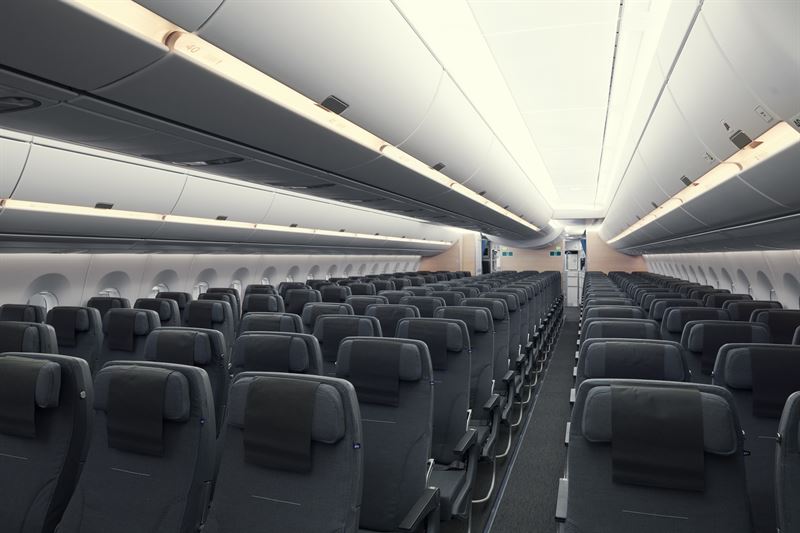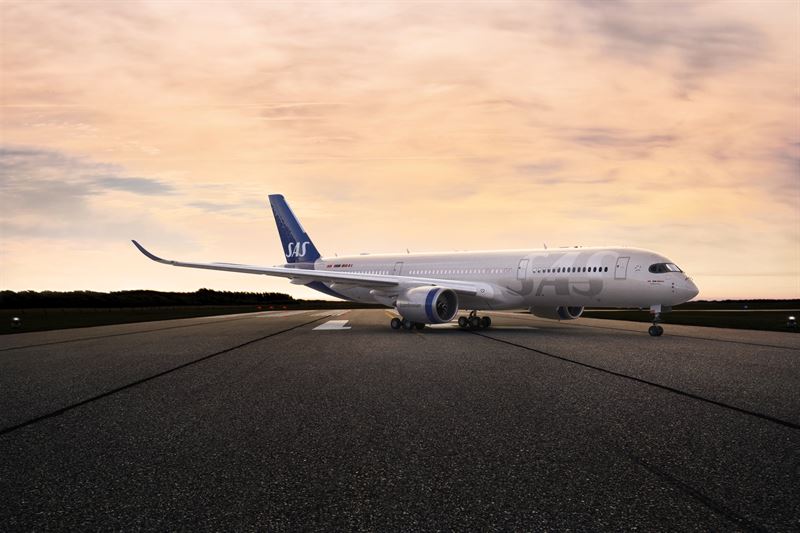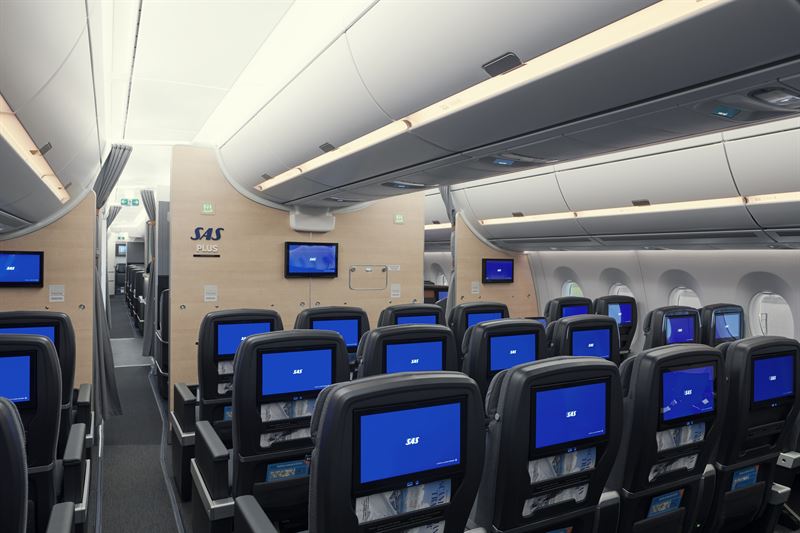
The first of eight brand new Airbus A350-900 aircraft officially entered the fleet of Scandanavian airline SAS yesterday – just over a week after being delivered from the European aircraft manufacturer. The delivery is part of a huge fleet modernisation programme and SAS is quite rightly proud to now have one of the most fuel-efficient and modern aircraft in its fleet.
Up until now, we’ve known that SAS would equip its A350 in a 300 seat configuration made up of 40 ‘SAS Business’ seats, a 32 seater ‘SAS Plus’ premium economy cabin and a 228 capacity ‘SAS Go’ economy class cabin. The design and products would largely mimic the SAS new cabin design first unveiled in 2015, although SAS also promised some special extras for the A350.

And now, SAS has finally unveiled what these “unique features” are. On the most part, they are unique to any A350 rather than to the SAS A350 – For example, SAS points out the aircraft boasts:
- Reduced carbon emissions of up to 30 per cent
- Quietest dual-aisle aircraft currently flying
- Lower cabin pressure and advanced humidity controls
The A350 also has the largest overhead lockers ever to feature on a commercial plane and vertical sidewalls that are meant to create more space for passengers at shoulder height. SAS also opted to have the standard Airbus tail cam wired into the in-flight entertainment system (which was meant to be a standard feature of the A350 until British Airways chose not to have it).
Finally, SAS has also paid for the standard Airbus ‘Airspace’ mood-lighting features to create a more restful cabin environment.
But once you start looking at the different cabin products, there’s not a huge amount of change. SAS Business features the airline’s current direct-aisle access Business Class seats. Although SAS has attempted to make some improvements by replacing the tray table with a new bi-fold table including a personal device holder and more durable seat padding.

The “welcoming” entranceway will double as the Business Class self-serve refreshment bar in-flight, including coffee machine and other beverages.
Meanwhile, SAS Plus features new premium economy seats – similar to what nearly every other A350 operator has opted for. The same is true for SAS Go, although the airline’s cabin designers only decided to give Economy Class passengers a USB outlet and not a PC-power outlet. Thankfully, SAS has at least included a cross-aisle passageway midway through Economy Class to break up the otherwise huge cabin.
New Economy Class kiosk offering by @flysas in aft galley of #A350 – but prices are steep starting from €/$3 for the smallest items #PaxEx pic.twitter.com/tyaXde5bpb
— Andreas Spaeth (@SpaethFlies) December 9, 2019
But perhaps the biggest addition to the Premium Economy and Economy cabins is the addition of a snack shop built into the rear galley. SAS claims they decided to create the kiosk to “encourage passengers to take a walk to boost health onboard.” Although it’s worth pointing out that everything in the kiosk has to be paid for – most items cost €3, although SAS will also offer pizza slices cooked to order for €6.
SAS otherwise considers itself a full-service carrier so main meals and beverages on long-haul flights will continue to be served as standard. Nonetheless, the kiosk is an interesting development and it wouldn’t be too much of a surprise if other airlines follow in SAS’ footsteps. Certainly, Etihad, which has gone big with additional buy-on-board F&B offerings will no doubt be eyeing up this concept.
The first SAS A350 named Ingegerd Viking will enter long-haul service on the 28th of January. Based in Copenhagen, the aircraft will operate on seven routes during the first year, including Chicago, Beijing, New York, Tokyo, Shanghai, Hong Kong and San Francisco.
Related
Mateusz Maszczynski honed his skills as an international flight attendant at the most prominent airline in the Middle East and has been flying ever since... most recently for a well known European airline. Matt is passionate about the aviation industry and has become an expert in passenger experience and human-centric stories. Always keeping an ear close to the ground, Matt's industry insights, analysis and news coverage is frequently relied upon by some of the biggest names in journalism.







